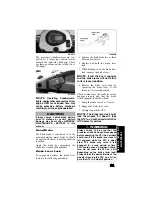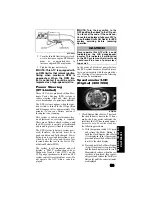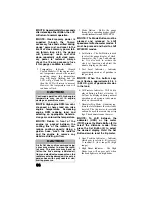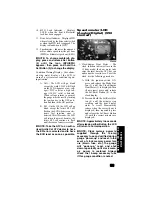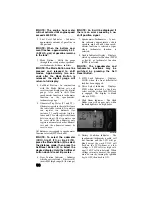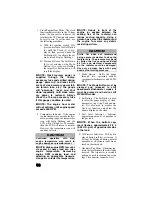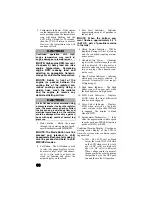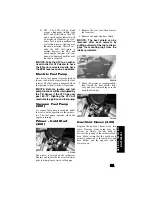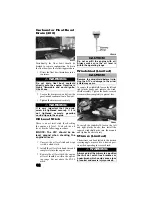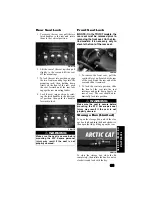
48
ATV Operation
Cold Weather Driving
NOTE: Check that all control
levers move freely. Make sure that
the footrest, shift lever, and rear foot
brake are free of ice and snow.
1. With the transmission in neutral,
move the ATV forward and back-
ward to check that the wheels roll
freely. If the ATV will not roll, the
tires may be frozen to the ground or
the brake pads may be frozen to the
discs.
2. If the tires are frozen to the ground,
pour warm water around them to
melt the ice.
3. If the brakes are frozen, use a suit-
able heating device to thaw out the
brakes.
NOTE: After the brakes thaw, dry
them by applying them several
times while riding slowly.
NOTE: After riding through
water, mud, snow, or slush, it is
important to dry both brake sys-
tems before parking the ATV.
4. Practice driving in an open snow-
covered or ice-covered area at slow
speeds before driving on snow-cov-
ered or ice-covered trails.
5. Learn how the ATV responds to
steering and braking on the type of
terrain to be encountered on the ride.
Stopping The ATV
To stop the ATV, first release the throttle
lever. Next, apply the brake.
Stopping The Engine
To stop the engine, turn the ignition
switch key to the OFF position or set the
engine stop switch to the OFF position.
NOTE: Leaving the ignition
switch key in the ON position
could result in a discharged bat-
tery.
! WARNING
For your personal safety, it is very
important to wear the type and
amount of cold-weather clothing
according to the coldest anticipated
temperatures.
CAUTION
Before riding, manually move the ATV
forward and backward to make cer-
tain that all wheels roll freely.
! WARNING
Do not attempt to free frozen brakes
by pouring warm water on the brake
pads and housings.
! WARNING
Go slowly and be extra careful when
riding on snow-covered or ice-cov-
ered terrain. Always be alert to
changing terrain conditions when
operating the ATV.


















